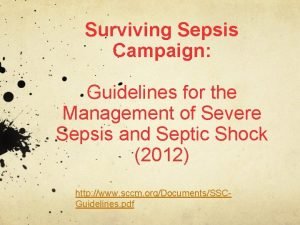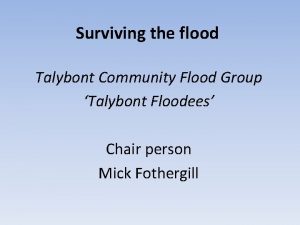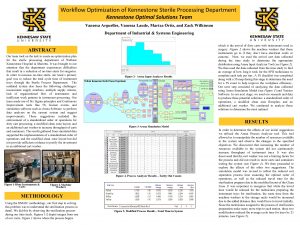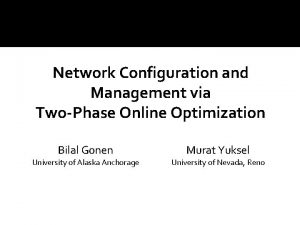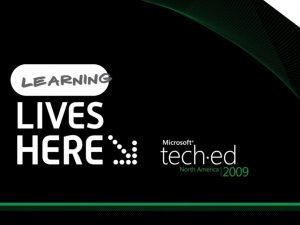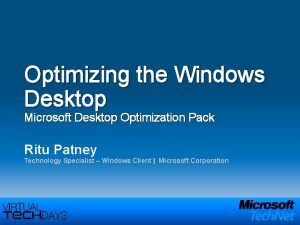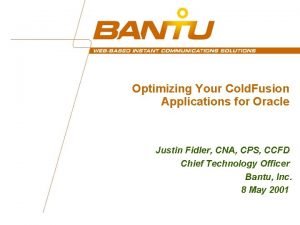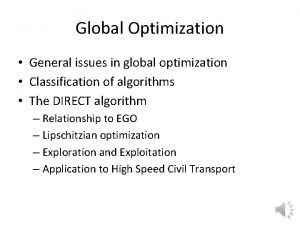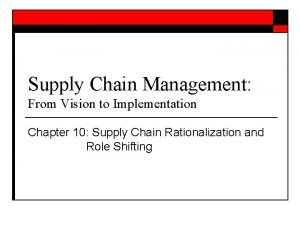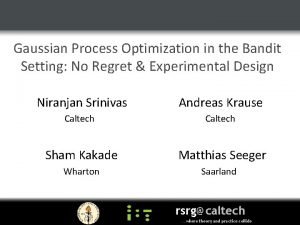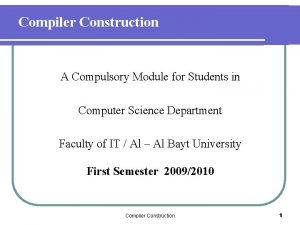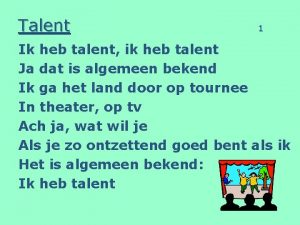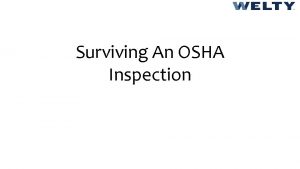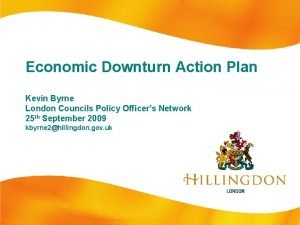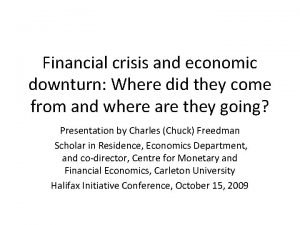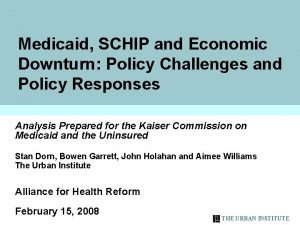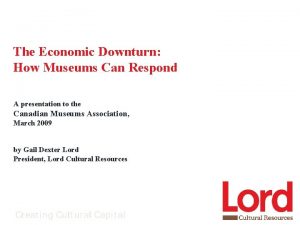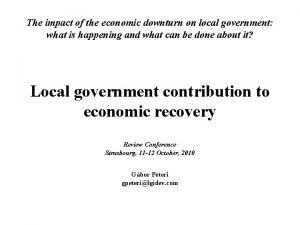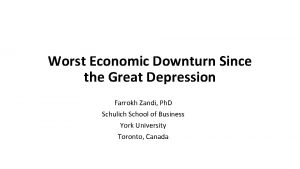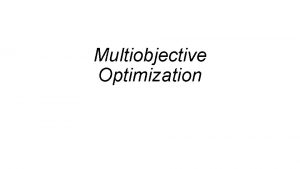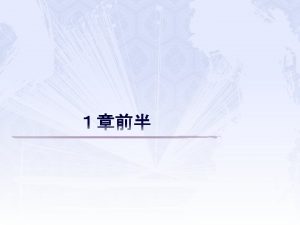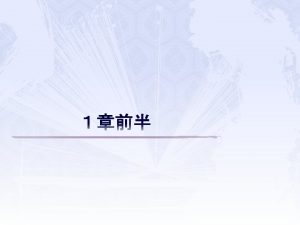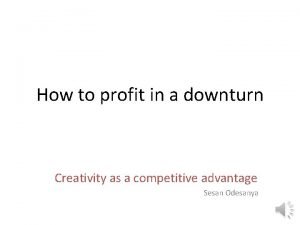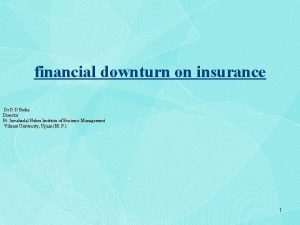Surviving an Economic Downturn With Talent Optimization Talent





























- Slides: 29

Surviving an Economic Downturn With Talent Optimization Talent optimization enables your company to adapt to changing circumstances, protect its productive assets, and emerge stronger. 1

A message from PI CEO Mike Zani https: //piworldwide. wistia. com/medias/ojhw 1 l 8 u 39 2

Introduction We know you care deeply about building a lasting company. But with COVID-19 and the resulting economic downturn, uncertainty is the new normal for everyone. You’re navigating uncharted waters, battered by turbulence, and propelled forward by an urgent, deep-seated need to lead your company to safety—so it will endure. Additionally, seeing your employees succeed is important to you. You have a duty of care; their overall well-being matters. Aside from taking health precautions, the best way to take care of your people right now is to ensure your company is resilient. 3

Mobilize and inspire your talent through talent optimization. Talent optimization is a discipline for designing and executing a talent strategy that’s aligned with your business strategy. It utilizes quantitative “people data” and analytics to help you predict outcomes and make informed decisions. While it’s hard to manage panic and the impulse to make knee-jerk decisions, objectivity will be your saving grace. 4

Pre-work Before you jump into problem-solving mode, the first order of business is to develop a thoughtful internal messaging plan. In a downturn, a company’s ability to communicate with employees in a way that helps them feel valued and motivated in spite of change and uncertainty is critical. Lead with openness, transparency, and honesty. Communication is an essential part of an effective, deliberate crisis response plan. Executives should take simple steps to stay ahead of events and retain control of their operations. These steps are derived from proven disaster management best practices. 5

Talent optimization is a practical way to ensure agility and resilience. Talent optimization enables your company to rapidly pivot in light of changing circumstances—so you can make tough decisions, fast and with confidence. While talent optimization is a solution for everyday business challenges, it’s exceptionally helpful in times of change and uncertainty. In this guide, we use the four aptitudes of talent optimization—Design, Inspire, Diagnose, and Hire—to provide a framework for how to adapt your business and solve the challenges caused by COVID-19 and its resulting economic downturn. 6

Now is the time to take swift, difficult action. Talent optimization is the key to ensuring: ● Rapidly realigned strategy and capabilities (Design) ● Adaptable operating model and culture (Diagnose) ● Resilient leaders, teams, and individuals (Inspire) ● Realigned jobs to accomplish more with less (Hire) Think of talent optimization as a series of surgical, highly-effective interventions you can take. Don’t get overwhelmed with the big picture; take it a step at a time. 7

It’s OK to not have all the answers. Your people will ask you hard questions: Do I have a job? What’s the company forecast? Avoid the temptation to be falsely positive. Tell them, “This is our philosophy. These are our guiding principles. We don’t yet know the full impact on our business. But we’ll make decisions with these guiding principles at the forefront. ” And don’t just say it, follow through. Let them see that they can trust you. 8

Design The Design aptitude of talent optimization is all about making the hard decisions on which capabilities to retain and which to let go—to support strategic realignment and ensure an adaptable strategy. When looking to stave off an economic downturn, you need to realign your strategy and refocus on your core operations. An adaptable strategy will see you through turbulent times—and hopefully, make you stronger in spite of them. Next, you’ll learn the steps you can take to realign your business strategy. 9

Step 1/5: Assemble a crisis response team ● Be aware of your behavioral tendencies: All executives should be aware of their behavioral biases (e. g. , risk tolerance, speed of action, etc. ) and how they may amplify under pressure. ● Understand what behaviors are needed: A crisis response team requires a variety of behaviors. For example, the leader must be able to make decisions quickly based on little information. ● Be clear about governance and decision making: The crisis response team should have representation from across the organization, but not everyone should have equal decisionmaking power. 10

Step 2/5: Adapt your business strategy Once a crisis hits, your task force must stay ahead of it. That means reforecasting revenue and reexamining costs. It also means reprioritizing the work to be done and reimagining how your teams will do this work. As you weigh the possible paths forward, revisit your existing business strategy. Start by identifying which strategic goals no longer make sense—then focus on a small number of critical priorities. 11

Step 3/5: Assess the behavioral fit of your leadership team. Adapting your business strategy is important, but execution is what determines success or failure. That begins with assessing senior team/strategy fit. Which executives are behaviorally suited to the task at hand? Who may struggle to perform while trying to execute the revised strategic priorities? Also, strategic alignment tools like the PI Strategy Assessment™ will visually map the native behaviors of a team to a strategy. That way, you can see how naturally-suited your leaders are to execute your strategy—and where there are gaps. 12

Step 4/5: Leverage unique strengths and quickly address leadership gaps. The leadership changes you make could be as simple as pulling one executive off of a certain initiative and swapping them with another. Or, you may need to make more sweeping changes. If you don’t have the right people on the current leadership team, look within. Identify and promote high-performers who are up to the task. Unfortunately, you may not even have the time to internally promote. So it becomes increasingly important for senior leaders to be self-aware. In doing so, they can learn to stretch their unique behavioral strengths to fit the current need. 13

Step 5/5: Modify your operating model. If your plan involves reductions in force or role changes, it means consolidating and altering existing teams. When assessing the need to tweak your structure, ask these questions: ● What existing roles will cease due to the crisis? ● Likewise, what new functions have opened? ● Which people are behaviorally fit for these new roles? ● Is restructuring needed to reallocate this talent and minimize cuts? 14

Inspire The Inspire aptitude of talent optimization is about empowering employees to manage themselves and their relationships with others. In a crisis situation, it’s critical to empower people to lead with confidence and self-awareness. If they’re governed by fear and uncertainty, people will bicker, argue, and make the wrong decisions. Next, you’ll learn the steps you can take to empower and inspire your people. 15

Step 1/4: Maintain career pathing Career pathing changes significantly in a crisis scenario. You likely don’t have the same ability to promote vertically, but that doesn’t mean you can’t create opportunities for individuals to grow. A change to your business strategy can eliminate existing functions and create new ones. These roles give employees an opportunity to prove themselves and develop in a new part of the business. Other opportunities may open up as senior leadership assesses the behavioral fit of its team members. Just because hiring has stopped doesn’t mean the organization won’t need new leaders in new places. 16

Step 2/4: Develop self-aware leaders When you manage someone who’s similarly wired, the process is intuitive. But when you’re wired differently, friction can arise. In times of uncertainty, it’s more important than ever for leaders to anticipate friction and work to avoid it. The PI Behavioral Assessment allows employees to understand their unique behavioral strengths and blind spots. The PI Management Strategy Guide gives managers tips for how to tailor their communication, feedback, and leadership style to meet different individual needs. 17

Step 3/4: Inspire high-performing teams. During times of rightsizing and reorganization, consolidation of teams is inevitable. Using team dynamic tools like PI Team Work Styles, you can aggregate behavioral data across entire teams or departments. This lets you visualize which behaviors team members share—and which ones they don’t. That way, you can adjust your teams to maximize their intended function. 18

Step 4/4: Protect and adapt your culture. Protect your culture by reinforcing and rewarding behaviors aligned with your mission. Even when reducing spend, look to provide learning and training opportunities. Encourage employees to shout those who reflect your core tenets and display needed leadership competencies. Adapt your culture by recognizing and rewarding behaviors associated with your revised strategic emphasis. 19

Diagnose The Diagnose aptitude of talent optimization is about measuring and acting on employee engagement data—to protect productivity and ensure the resilience of your operating model and culture. Next, you’ll learn the steps you can take to diagnose employee engagement. 20

Step 1/4: Determine what engagement looks like. Whether you’re remote or not, everyone’s experiencing some form of culture shock. Pinpoint where engagement may be most heavily impacted by asking: ● What’s causing the initial friction? ● Are there logistical challenges now that didn’t exist before? ● Did trust in leadership take a big hit because of a decision? ● Are employees feeling like they don't have the resources they need? ● Are managers pressing too hard? ● Are people turning on each other? 21

Step 2/4: Focus on the four underlying engagement drivers. To maintain morale, focus on the true underlying drivers of productivity and engagement: job fit, manager fit, organizational fit, and team fit. According to ADVISA President Heather Haas, leaders should be asking themselves this question: “What do my best and brightest need in order to feel emotionally connected to their job, their manager, their team, and this organization, amidst all the change and uncertainty? ” 22

Step 3/4: Redefine what metrics matter most. Most businesses monitor much of the same data: sales figures, qualified leads, NPS, P&L, etc. And while these may remain critical barometers of business health, they exist largely apart from people. Now more than ever, complementing these business metrics with people metrics—namely employee engagement data—is essential. 23

Step 4/4: Measure employee engagement data. One of the non-negotiable keys to surviving a downturn is that you gauge how your workforce is feeling emotionally. Start with whatever is the most efficient, cost-effective manner of gathering the data you need. That may mean: ● Simple spreadsheet programs with analysis features (e. g. , Excel) ● More sophisticated analysis tools like Domo ● The PI Employee Experience Survey, which addresses the four forces of disengagement (job, manager, organization, team) on a company-wide and team level so you can identify which teams are hurting the most. 24

Hire The Hire aptitude of talent optimization is about re-evaluating job requirements in light of shifting circumstances and pivoting from higher-volume hiring to high -stakes hiring. In a downturn, each hire you make is all the more critical. Next, you’ll learn the steps you can take to tackle high-stakes hiring. 25

Step 1/3: Re-evaluate job requirements. When you consolidate functions to save money ask yourself, what’s the nature of that new job? What are the behavioral requirements of the job? 26

Step 2/3: Hire surgically for still-open positions. Those whose pipelines remain open, whether because of service need or industry opportunity, still must recruit carefully. In fact, the risk of onboarding organizational misfits may be greater with so many applicants potentially crossing industries or seeking an immediate answer to their unemployment. Don’t view hiring solely through the lens of external recruiting; hire from within when you can. By hiring from within, you can fill immediate gaps while also more efficiently utilizing the staff that’s on hand. Use the PI Behavioral Assessment and the PI Cognitive Assessment to ensure behavioral and cognitive job fit. 27

Step 3/3: Reorganize priorities according to new business conditions. HR teams who aren’t busy hiring can become more efficient. That could mean: ○ Tweaking the interview process to include new parties ○ Better defining and communicating existing job requirements ○ Soliciting additional stakeholder input ○ Pinpointing remaining behavioral and cognitive needs ○ Creating compelling job ads for after the freeze ○ Ensuring proper documentation with candidates stuck in the pipeline ○ Improving the overall hiring process 28

Conclusion Running a company during a downturn and health crisis is an immense challenge that will test character and skills. Those who lead with humility and pragmatism can find a silver lining, and empower their organization to pull through and thrive. Let the storm show your mastery. You don’t have to go it alone. If you’d like expert help and support to assess your situation, reorganize priorities, manage change, or simply develop a talent optimization strategy during this time, you can lean on a talent optimization consultant. Most are equipped to meet you remotely and even facilitate larger team sessions virtually. 29
 Surviving sepsis definition
Surviving sepsis definition 7 wonders of oregon map
7 wonders of oregon map Hearth of folk culture
Hearth of folk culture Plant evolution cladogram
Plant evolution cladogram Oldest surviving greek drama
Oldest surviving greek drama Heorot pronunciation
Heorot pronunciation Mary ann cotton young
Mary ann cotton young Wolfgang amadeus mozart's was the only-surviving son
Wolfgang amadeus mozart's was the only-surviving son Surviving a flood
Surviving a flood Questions about estuaries
Questions about estuaries Conclusion of growth and development
Conclusion of growth and development Economic systems lesson 2 our economic choices
Economic systems lesson 2 our economic choices Economic growth vs economic development
Economic growth vs economic development Sterile workflow optimization
Sterile workflow optimization Network configuration optimization analysis
Network configuration optimization analysis Microsoft desktop optimization pack download
Microsoft desktop optimization pack download 3-3 optimization with linear programming
3-3 optimization with linear programming Agner fog optimization
Agner fog optimization Junction hec ras
Junction hec ras Texture optimization for example-based synthesis
Texture optimization for example-based synthesis Microsoft asset inventory service
Microsoft asset inventory service Cfqueryparam null
Cfqueryparam null Qp formula
Qp formula Quadratic optimization problems
Quadratic optimization problems Global optimization
Global optimization Supply base rationalization and optimization
Supply base rationalization and optimization Gaussian process bandit
Gaussian process bandit Sequential model based optimization
Sequential model based optimization Ai process optimization
Ai process optimization Phases of compiler construction
Phases of compiler construction
